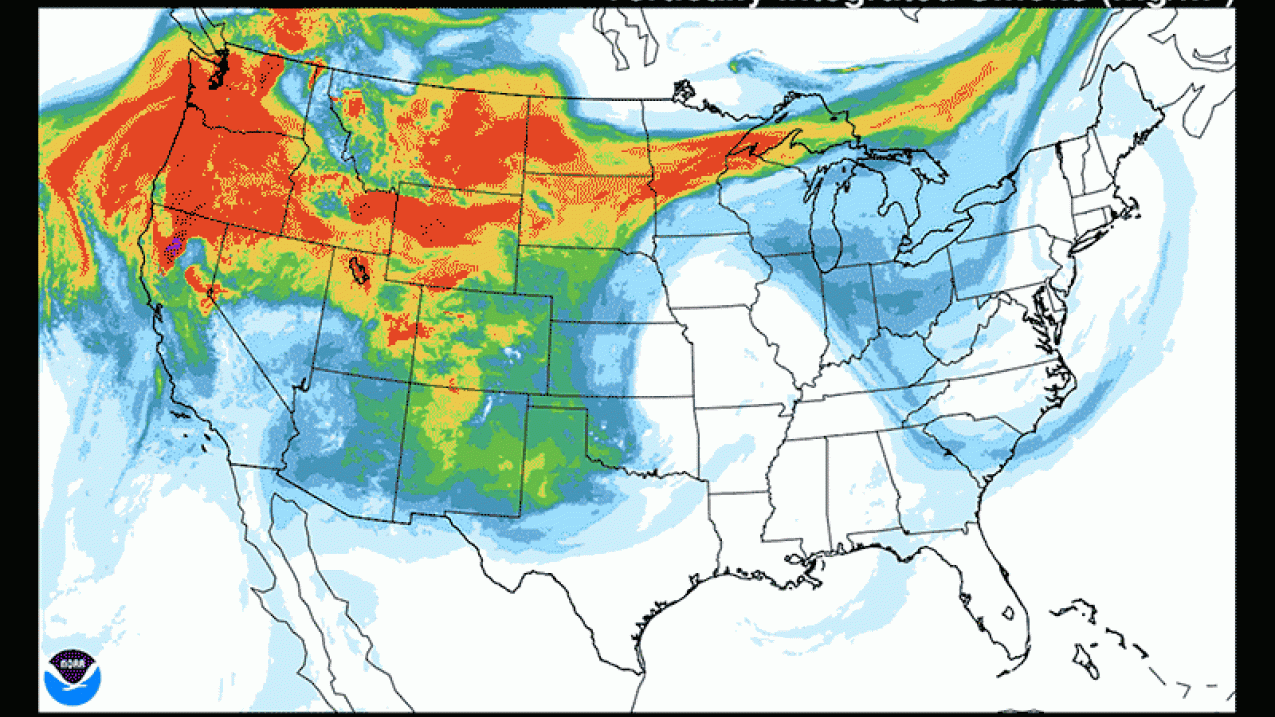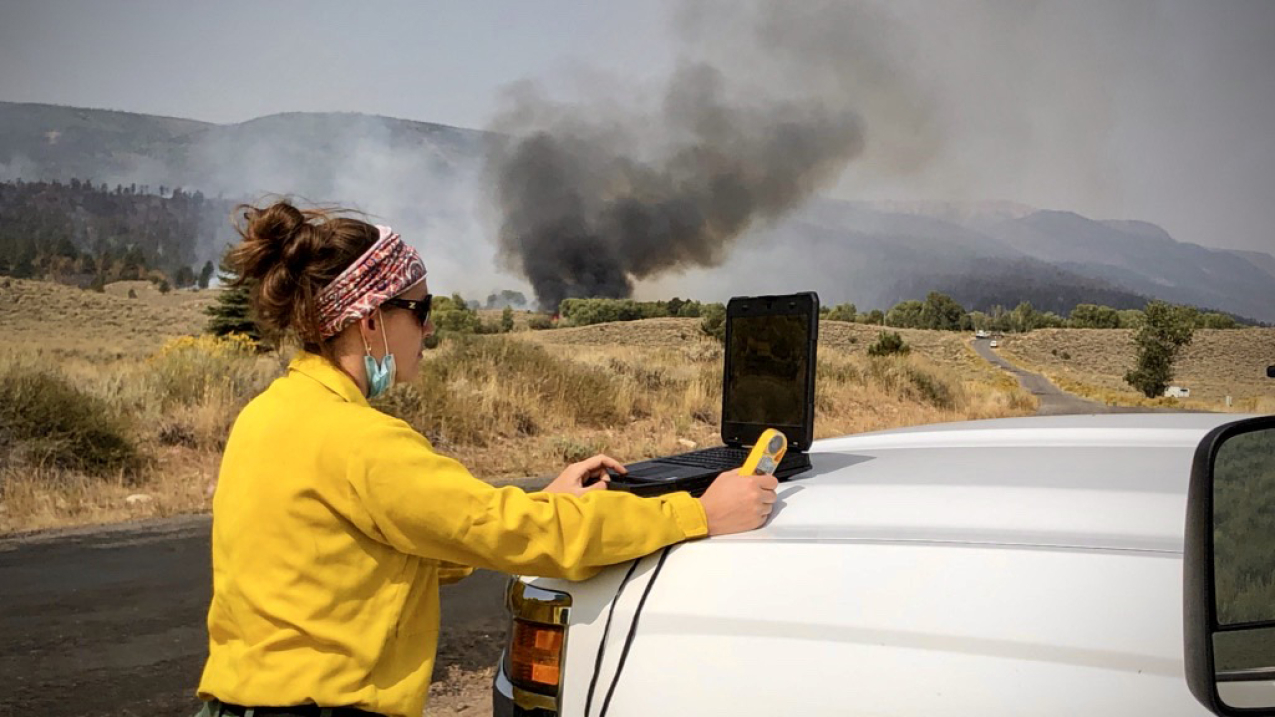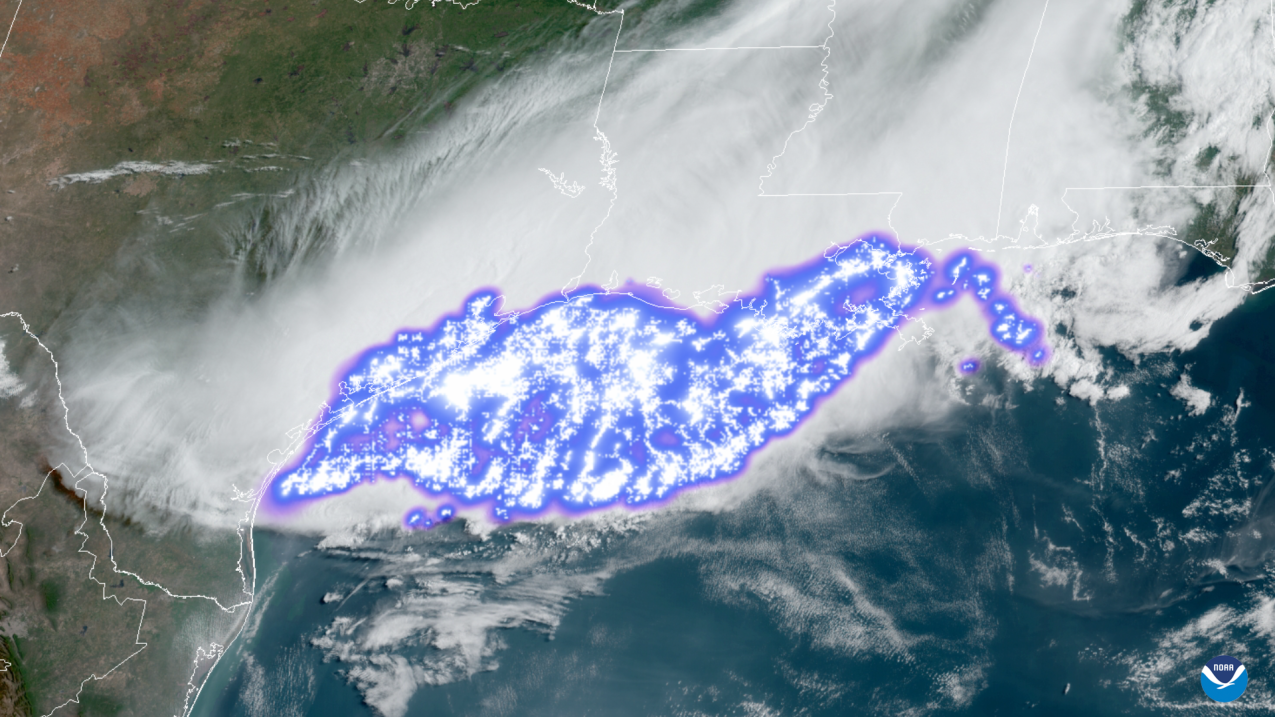NOAA’s real-time fire and smoke detection tools take advantage of the latest imaging technologies aboard geostationary and polar orbiting satellites to provide valuable information to wildfire incident commanders and other public officials.
NOAA’s newest GOES satellites track lightning strikes which are responsible for many backcountry fires. Satellites can also identify and monitor heat signatures from new and existing fires offsite link, and track wildfire smoke offsite link to inform air quality assessments.
The factors that determine wildfire behavior are complex, always evolving, and influenced by a number of variables, including fuel type, quantity, structure, and moisture content. NOAA’s national weather observing system offsite link captures many of the most important and most variable drivers, such as temperature, relative humidity, wind speed, and precipitation, each of which can rapidly alter fire behavior.
After a fire starts, National Weather Service meteorologists share real-time, localized observations and forecasts on weather conditions that determine fire behavior. They also generate short-term forecasts needed by incident commanders responsible for deploying firefighting crews in harm's way. For larger fires, specially trained Incident Meteorologists will be deployed to an incident command center to provide immediate updates.
Over the life cycle of a fire, combinations of flaming and smoldering combustion and pyrolysis lead to different emissions at different times and at different locations within a fire. NOAA’s smoke and air quality models deliver accurate forecasts of wildfire smoke movements and air quality impacts.
NOAA National Weather Service meteorologists supporting wildfire management utilize the High Resolution Rapid Refresh short-term weather model, or HRRR, which generates forecasts of all aspects of changes in weather, from temperature, humidity and wind, to the arrival of storms and the potential for lightning and precipitation, to the movement of wildfire smoke, every hour, for each 3-kilometer forecast grid over and upwind of a fire. NOAA’s National Air Quality Forecast Capability provides twice daily for 72-hour operational air quality forecast guidance for wildfire smoke and impacts to ground-level ozone to inform people at risk.
NOAA’s National Weather Service has a team of specially trained meteorologists who are deployed to major fires to provide on-site, real-time weather observations and forecasts for incident commanders responsible for marshaling firefighting resources. These incident meteorologists, or IMETs, keep firefighters safe by interpreting weather information, assessing its effect on the fire, and communicating it to fire crews. Once on-site, IMETs become key members of the incident command teams and provide continuous meteorological support for the duration of the incident.
NOAA/NESDIS Satellite Analysis Branch's Hazard Mapping System combines near real-time polar and geostationary satellite observations into a common framework to generate automated fire products and digitization of smoke plumes. The JSTAR Mapper displays a range of observations associated with fire and vegetation from NOAA's polar-orbiting satellites. AerosolWatch features observations related to air quality drawn primarily from our GOES series of satellites.




